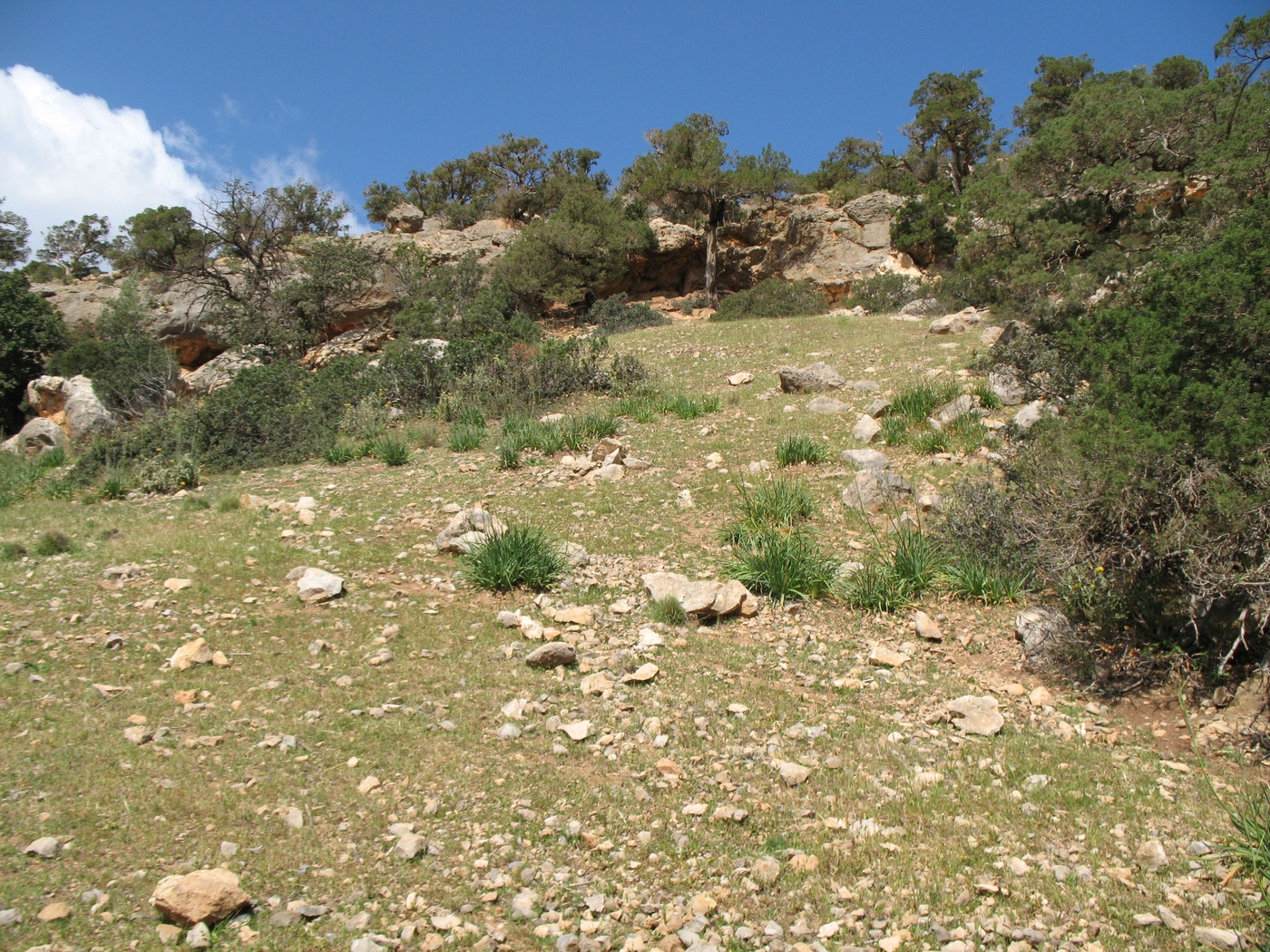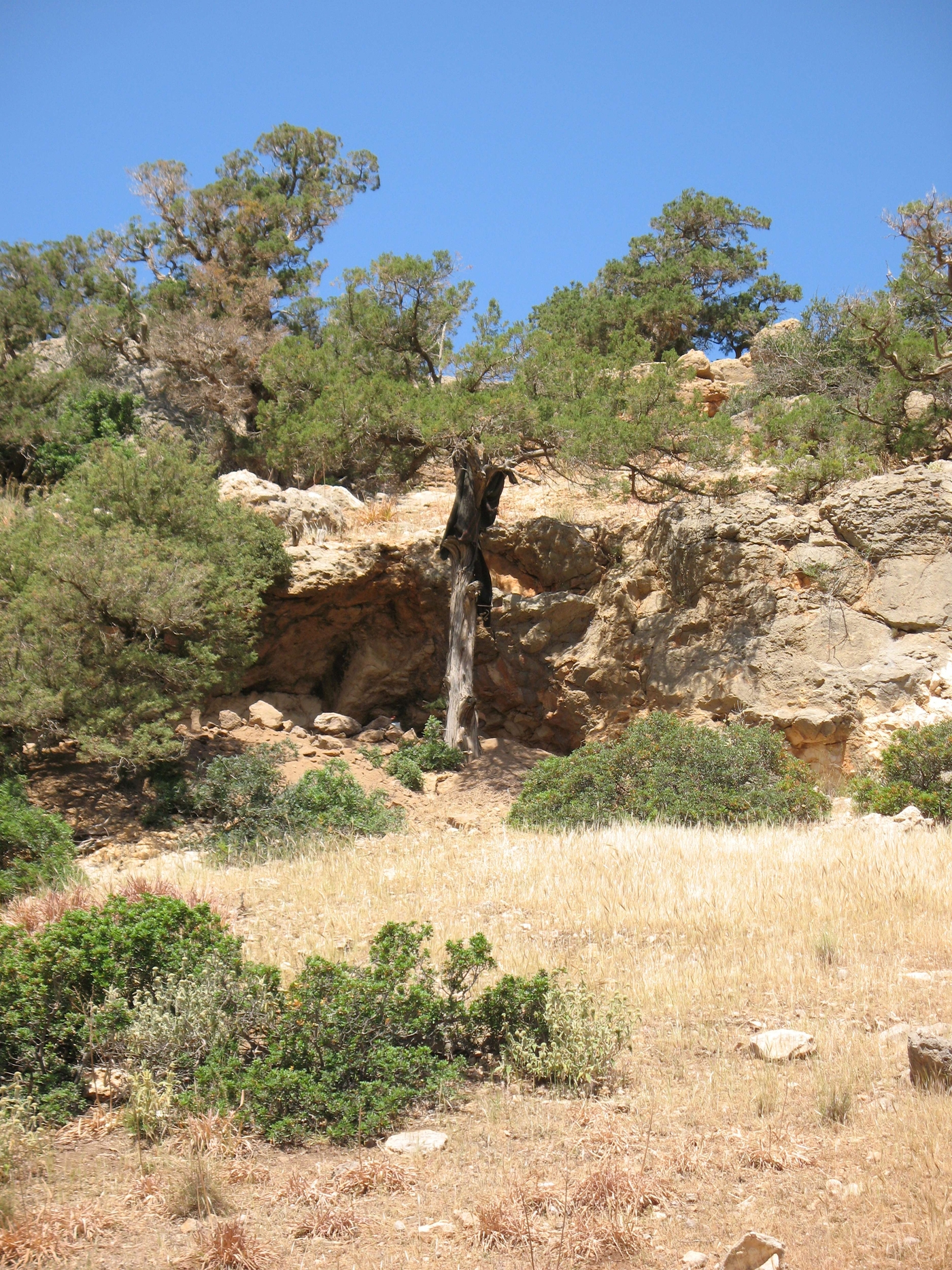Prehistoric sites of Cyrenaica
Since it was formed, the French archaeological mission in Libya has constantly sought to extend its field of study. It was the first, in 2006, to resume prehistorical research into Cyrenaica, after C. McBurbney (1940-1955), who discovered the celebrated Haua Fteah cave. Unlike other more intensively studied North African regions, very little is know about the Prehistoric and Protohistoric periods in Cyrenaica.

Alongside the excavations, which concentrate on specific areas, surveys are essential because they shed light on the model of occupation in under-explored regions and provide data for the archaeological map of the country ‒ an essential element in understanding the history of Libya in its entirety.
The Prehistoric shelter of Abu Tamsa
Located 9 km to the east of Apollonia-Susa, this small shelter (20 m2) has been studied since 2006. Excavations have revealed a large amount of archaeological and faunal material, shedding light on the lifestyle of Neolithic groups through their industries (lithic, bone, pottery and ornaments) and their dietary habits.
Based on evidence from this site, animals were domesticated from the first half of the 6th millennium and pottery production began in the second half of the 7th millennium BCE, placing the Neolithic period of this region among the oldest in northern Africa.
The Kaf Tahr cave
In 2009, with help from Sophie Marini, surveyors discovered the site of Kaf Tahr, bringing the number of rock caves known in Cyrenaica to three. Kaf Tahr has engravings from at least two different chronological periods: a first series dating back to the Epipalaeolithic, with large wild naturalistic animals (ostriches, gazelles, birds and fish), and a second dating probably from the Protohistoric period, with schematic figures but above all a scene with a male figure holding a sword and a shield, an unhitched chariot and two harnessed horses, supporting the theory that metalworking and the domestication of the horse in Cyrenaiac dated from before the historic period.
The research team
The French archaeology mission of Libya was founded in 1976 by François Chamoux, and resumed in 1981 by André Laronde, and then in 2011 by Vincent Michel. Initially focused on the Greek-Roman period (Leptis Magna, Apollonia-Susa), it has constantly expanded its field of research into Late Antiquity (Erythron-Latrun) and Prehistory.
The complex security situation has shifted the focus to strengthening cooperation between the French and Libyan teams, with training in archaeology, archaeometry and conservation techniques, and post-excavation work.
Supported by the French Ministry for Europe and Foreign Affairs on the advice of the Excavations Board, the mission works to combat the theft and illicit trafficking of cultural property, which is one of the priorities of the French Ministry of Culture.
Learn more:
- The webpage of the Research centre on Ancient Libya
- The Mission on the website of the French Ministry for Europe and Foreign Affairs





